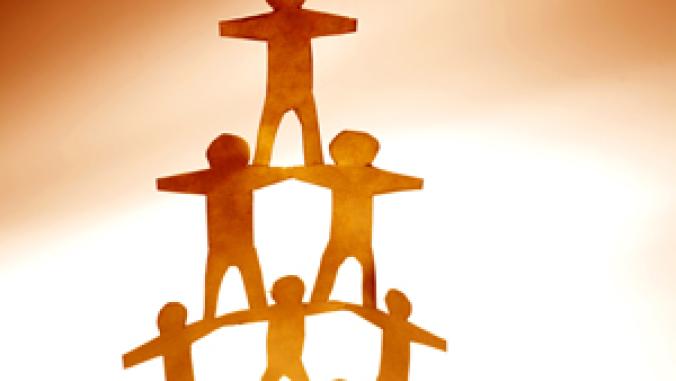3 ways IT can support greener behaviors
<p>Sure, behavioral change can yield impressive progress in sustainability initiatives. But pair that with the right technology and the results can be tremendous.</p>

How do we change people's behavior to reduce GHG emissions?
A group of us sat around an oak rectory table in a former monastery which now serves as the headquarters for Garrison Institute, our host for the "Climate Mind and Behavior" symposium. A monastery reverberated as the right setting for contemplating more righteous behavior.
The purpose of the symposium was to share academic research and real-world projects on how to best shift behavior using social and behavioral sciences. As the lone IT professional, my goal was to contribute on ways that technology could support behavioral programs.
Why Is Changing Behavior Critical
"Behavioral approaches," explained Dr. Karen Ehrhardt-Martinez, director of Climate Mind and Behavior at Garrison Institute, "offer the promise of large, rapid and relatively inexpensive means of reducing carbon emissions."
There are case studies where people achieved incredible results just through their personal efforts.
Research on building performance uncovered two to three times variation in performance. The least energy efficient buildings with the most energy smart occupants outperformed better buildings with less savvy occupants. If we could learn from positive behaviors and craft programs to duplicate them, the returns would be fabulous.
Top 3 Areas Where IT May Contribute
Along with the happy anecdotes of change, presenters also reviewed those efforts that had complications such as maintaining the change over long periods or scaling the change effort to large groups.
IT may complement behavioral strategies by doing what IT does best; automating repetitive activities, finding meaning in large amounts of data and providing instrumentation to help us optimize.
1. At Your Service: Automate desired behavior shifts whenever possible
When looking to reduce energy use in its many research labs, the change management team at the University of Toronto uncovered that the fume hoods required to remove toxins are huge energy consumers. Although critical for health and safety when researchers are present, fume hoods that are running at maximum speed are a waste of energy when the lab is empty.
This appeared to be an ideal candidate for a behavior campaign, since the only task was for each researcher to pull down his/her fume hood before leaving the lab. What could be simpler?
The program failed over time, although it was well defined, exceptionally executed and supported by management.
Focusing on behavior is a popular tool among budget strapped change managers, since a behavior program is often a smaller investment compared to more systemic changes. "We did not have a budget", explained Zannah Matson, research assistant at the Centre for Environment, "affecting people's behavior was our only option."
One idea, based on my research, is to use automation, since occupancy sensors to manage fume hoods provide a payback of less than a year. Other good candidates for automation are repetitive activities such as hibernating a computer, turning off devices when not in use, and lowering building temperatures.
Costs of technology continue to decline, so opportunities to use are increasing. Partnering with a green finance manager and applying behavioral insights to convince management to invest wisely is equally important in the quest to reduce energy use.
2. Have It Your Way: Use IT business intelligence to present appropriate messages
Several speakers highlighted research by change management guru Robert Cialdini. "A well-known principle of human behavior says that when we ask someone to do us a favor we will be more successful if we provide a reason," states Cialdini in his book "Influence."
"People simply like to have reasons for what they do," he wrote.
Ehrhardt-Martinez cautioned us that the wrong reason could turn people off. She encouraged us to work within people's current value system and focus on developing an appealing message based on those values: "We don't need to change beliefs, we need to change behavior."
Since the smart energy target group is broad, a single reason will not appeal to everyone. For greens, the reason could be global warming. For mothers, the motivation could be clean air to reduce asthma. For some, energy independence is appealing. For the small business owner, reduced costs are often compelling.
Yet a long list of potentially conflicting benefits may be ignored. My recommendation is to use IT to understand more about the energy consumer and then present each with the appropriate benefit.
The methods of high tech masters should be studied and exploited to sell energy smart behaviors. The retailer Target uses sophisticated data mining to find and then engage customers, as reported recently by the New York Times. Other companies use website traffic to determine values and interests.
3. You are a Winner: Use IT to provide frequent, simple and personalized feedback
Just sharing information periodically has proven to change energy use. The next level in providing information and feedback is making the process into a game. The game approach combines the best change management practices -- define the rules, provide a clear goal, make the score visible -- that hooks the player.
An early adopter of games is Cool Choices, a NGO that is using a gaming platform to make reducing one's carbon footprint fun. Kathy Kuntz, executive director at Cool Choices, explained that when done well, a game will motivate the players to put in extra effort to win more points.
Cool Choices worked with Miron Construction, a firm whose business strategy was based on sustainability with its focus in LEED building. To encourage participation, the founders were deeply involved and reinforced the message that energy conservation was part of the firm's core beliefs.
Top management support is critical to get people to try the game, but it is difficult to maintain enthusiasm for long periods unless the game is easy, fun and pays dividends.
The player selects from a variety of actions and depending on the impact, points are rewarded. There were bonus opportunities for sharing activities and influencing others to help build a community.
Kuntz emphasized that points were used rather than dollars, kilowatt hours or carbon savings to maintain the gaming culture. When describing activities and benefits, Kuntz's team ensured there was "no geek speak."
The results are promising. Seventy-five percent signed up and 67 percent played. Prior to the game, less than 20 percent of the participants made a significant effort to save energy. After the game, more than 70 percent were making a significant effort.
As a frustrated captive forced to watch poorly acted videos, the failed HR attempts to make other types of training "fun," my advice is to remember that the investment and skill required to produce green games that are as engaging as commercial games should not be underestimated.
Conclusion: It's the System, Not the People
The environmental missionary, Paul Hawken pointed out that "ninety percent can do little. Our choices are very constrained." Hawken asked us to consider "A thousand who care deeply about climate change and a thousand who think it is hogwash. Compare footprints."
Hawken's analogy reminded me of the "85/15" rule first posited by Total Quality Manager guru W. Edwards Deming. Deming's research found that 85 percent of the participant's effectiveness is determined by the system and 15 percent by the participant. Likewise when there are inefficiencies or failures, 85 percent of the time it is due to the system.
IT has the potential to help reduce system challenges as we undertake greener behaviors. Technology can act as our servant and take care of repetitive behaviors such as turning off the lights. Technology can be our guide by directing us to information that resonates based on personal values and interests. Technology can be our coach with tailored feedback to keep us engaged.
To review the presentations referenced in this article and others from the recent symposium, visit Garrison Institute.
Photo of light switch via Shutterstock.com





